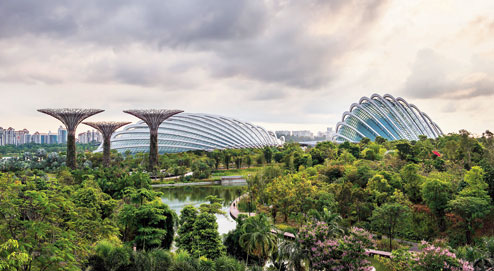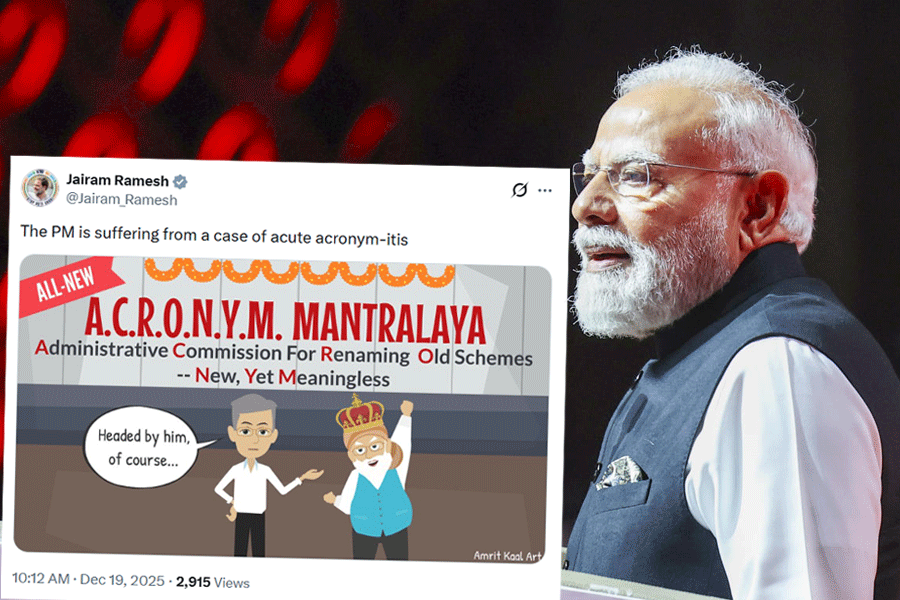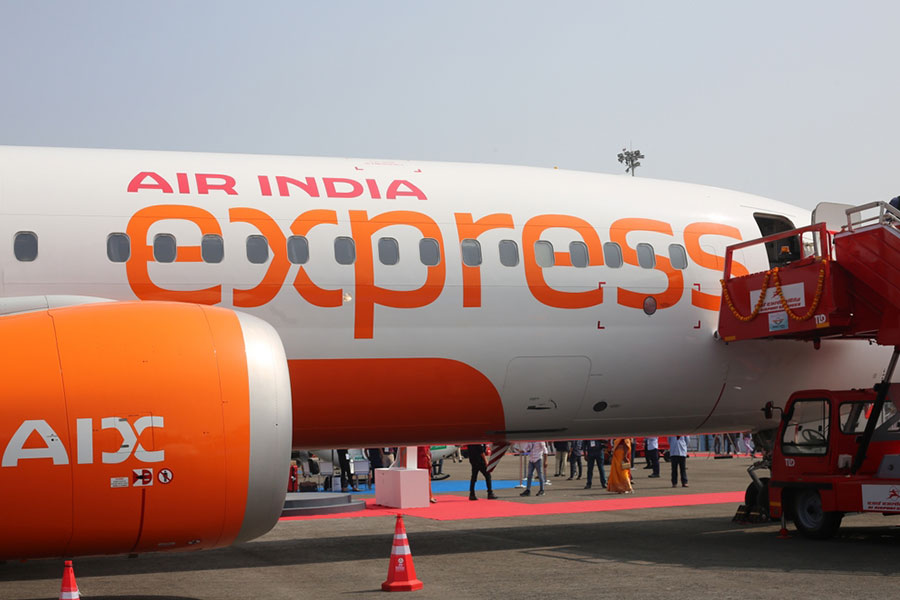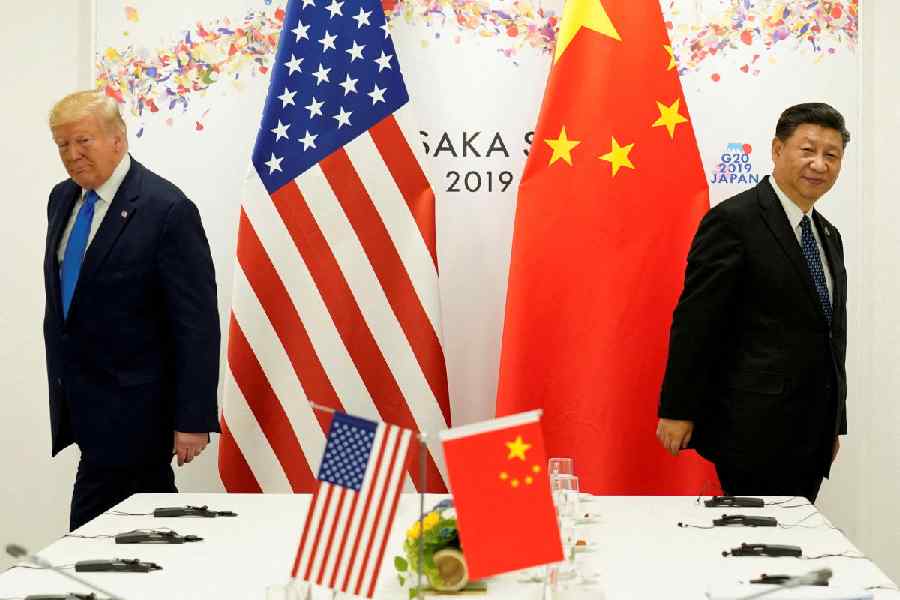
What comes to mind at the mention of Singapore? Clean and green? Global financial hub? Tiny country? The island nation has made a remarkable turnaround from the lows it found itself in soon after gaining independence in 1965, and gone on to become within a single generation a country with a robust economy. Today, Singapore is one of the world’s most “liveable” cities. Here’s what makes it special.

CITY IN A GARDEN

“Garden city” is passe. Singapore now aspires to be “a city in a garden”. Its green cover has gone up from about 35 per cent in 1986 to 50 per cent now. The latest is sky gardens, vertical gardens (above) and even “farms” in office buildings! “It’s wasteful to see office spaces unutilised from 5pm to 9am. So we’re propagating indoor farming in office corridors,” says Bjorn Low, founder of Citizen Farm, one of the first urban farms in Singapore that has set up scores of them in schools and offices. The hassle-free set-up is inside glass-covered racks, along with automated lights, ventilation and watering.
WATER SOLUTION

Singapore has no mountains from which streams come cascading down. It depends on imported water from Malaysia, local catchments of rainwater, desalinated seawater and NeWater, which is a technology to treat used water. Tap water in Singapore is potable. Floods in the city are prevented by Marina Barrage (above) at the confluence of its rivers and the sea. If the river level rises due to excessive rain, the dam gushes excess water into the sea. At the time of independence, Singapore’s waterways were polluted by hawkers, farms and factories but a 10-year-long clean-up drive from 1977 changed it completely.
START-UP SPACE

This isn’t a cafe. It’s Impact Hub Singapore, which in 2012 opened as the city’s first “co-working space” and has over 700 members now. Singapore’s thriving start-up culture has led to the rise of these office-like common areas where entrepreneurs can book space to work.
When privacy is needed, closed-door meeting rooms and Skype booths are available. There are lockers, shower rooms, pantries and even nap rooms. And there’s more. “We give our members access to funding, mentorship and the chance to network with other start-ups,” says Grace Sai, CEO and co-founder of Impact Hub.
MELTING POT

About 70 per cent Singaporeans are of Chinese, 14 per cent of Malay and nine per cent of Indian descent. To ensure social integration, the government has quotas on the sale of flats in every complex to maintain the “race ratio”. The Singapore Indian Development Association (Sinda) keeps an eye on the socio-economic situation of Indians. “In the 1990s, the Indian community was lagging behind. So we started giving cheap tuitions to help students and helped backward families financially so they could cope,” says Sinda CEO Ravindran N.
SIGN UP!
Much social work is initiated by bodies like Singapore International Foundation (SIF). The non-profit organisation has been working in the health, education and environment sectors in Asia for 26 years, and is also present in western and southern India.
“We work with local NGOs and withdraw after three years. The local partner then has to have the passion and ability to carry forward the work,” says SIF executive director Jean Tan. SIF also has a global contest for social start-ups and entries are now open. Here’s how to apply:
Young Social Entrepreneurs 2018
Eligibility: Anyone between 18 and 30 years.
Criterion: The business idea should have a social impact. For instance, one of the 2016 winners is Singapore-based Nomad. It gets artisans in a Rajasthan village to make leather bags and sells them, with the proceeds used to improve school infrastructure in that village
Prize: Sixteen shortlisted start-ups will be trained, provided with mentors and taken on overseas study-visits over several months. Six winners will get S$20,000 (Rs 9 lakh-plus) to launch or scale up their enterprise.
Last date of entry: December 10, 2017
For details visit: contest@sif.org.sg /yseapply
WALKING OR CYCLING OVER DRIVING

Despite having one of the highest per capita incomes in the world, 63 per cent of Singaporeans still use public transport to keep pollution and road congestion down. To that end, the government tries to make public transport convenient and private cars difficult to afford.
So before buying cars, people have to bid for a “Certificate of Entitlement” that proves exorbitant and discourages them to buy the car in the first place. Car parking fees are high and cars have to pay an Electronic Road Pricing (congestion fee) before driving into the city centre. And from February 2018, the rate of vehicle growth in the city is being cut from 0.25 to zero per cent.
The government runs a strong network of buses and Mass Rapid Transit (MRT/Metro) and encourages people to walk, cycle and use e-scooters and Segways. They’re building a Park Connector network that will connect every park in the city with a cycle/jogging track. This way, cyclists will not have to share road space with cars.
EMPOWERING THE DISABLED


Singapore is trying to create an inclusive society, especially for Persons with Disabilities (PWD). A perfect example would be the Enabling Village, a three-hectare estate which has supermarkets, restaurants, gyms and playschools with infrastructure and softwares to aid PWDs. All doors here are sliding, so wheelchair users can open them, the supermarket has magnifying glasses for people with low vision (above right) and the gym equipment use compressed air instead of iron, making it easier for senior citizens to use.
At the restaurant, Soul Food, 10 out of the 14 employees are PWD (above). “What would take a regular person a day to learn may take a PWD four months but it makes them happy and independent,” says Gerald Png, who started the restaurant in 2008 to engage those like his daughter Cheryl, who has Mild Intellectual Disability. The village also trains PWDs to do scanning, data entry, sewing, packing and gardening and companies come here to hire employees or to find out the kind of infrastructure they need to be PWD-friendly.
Text: Brinda Sarkar











